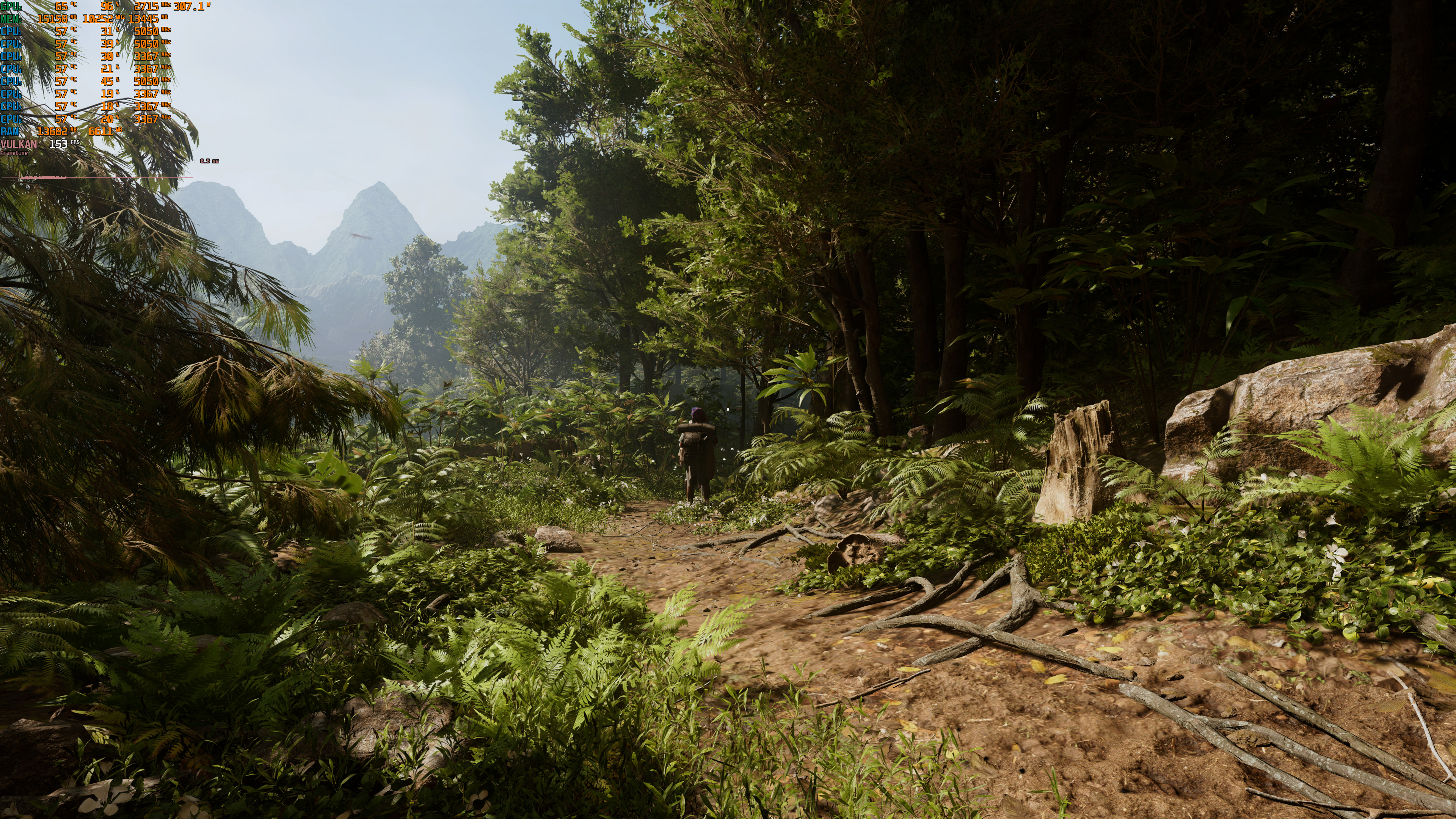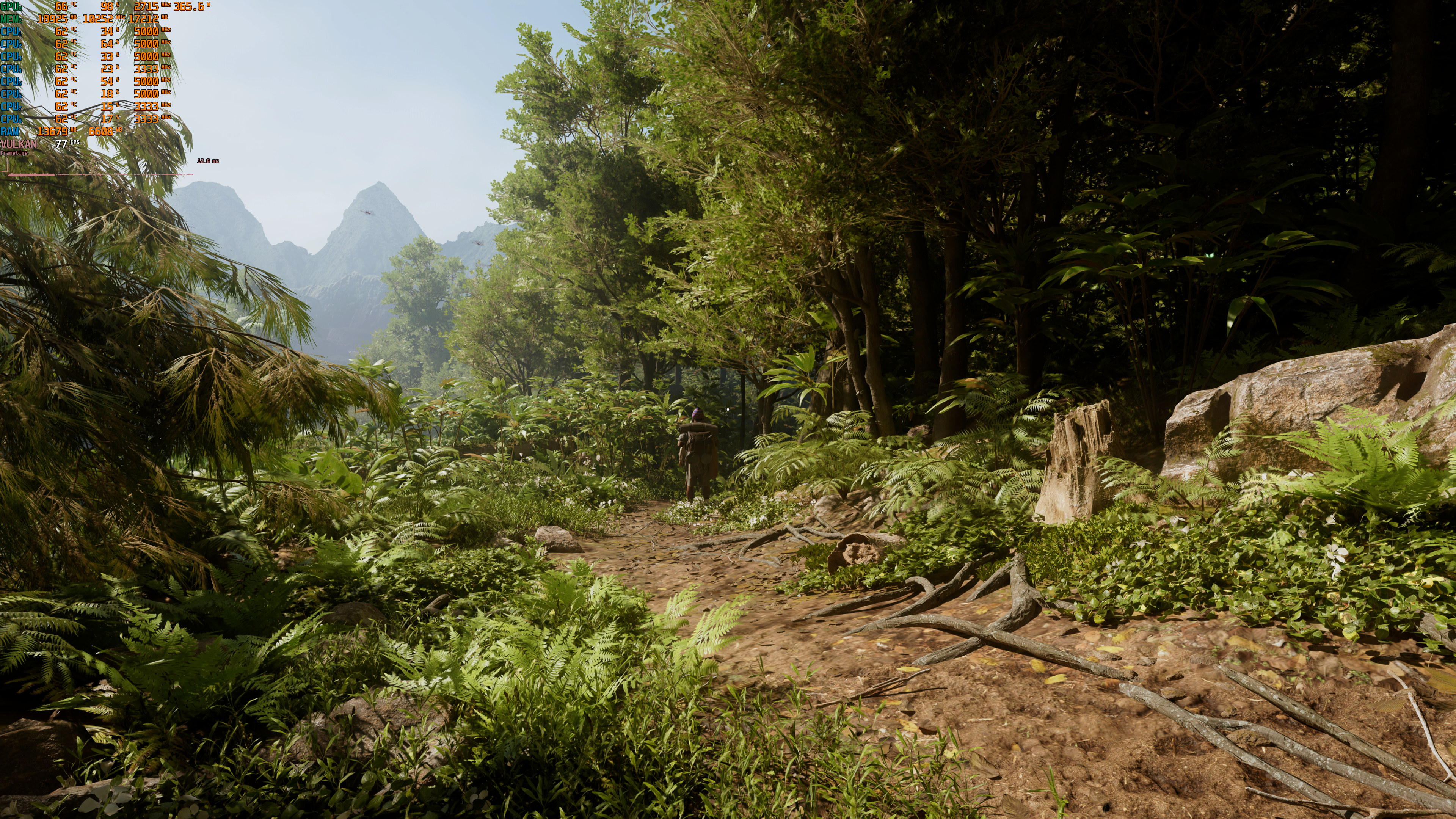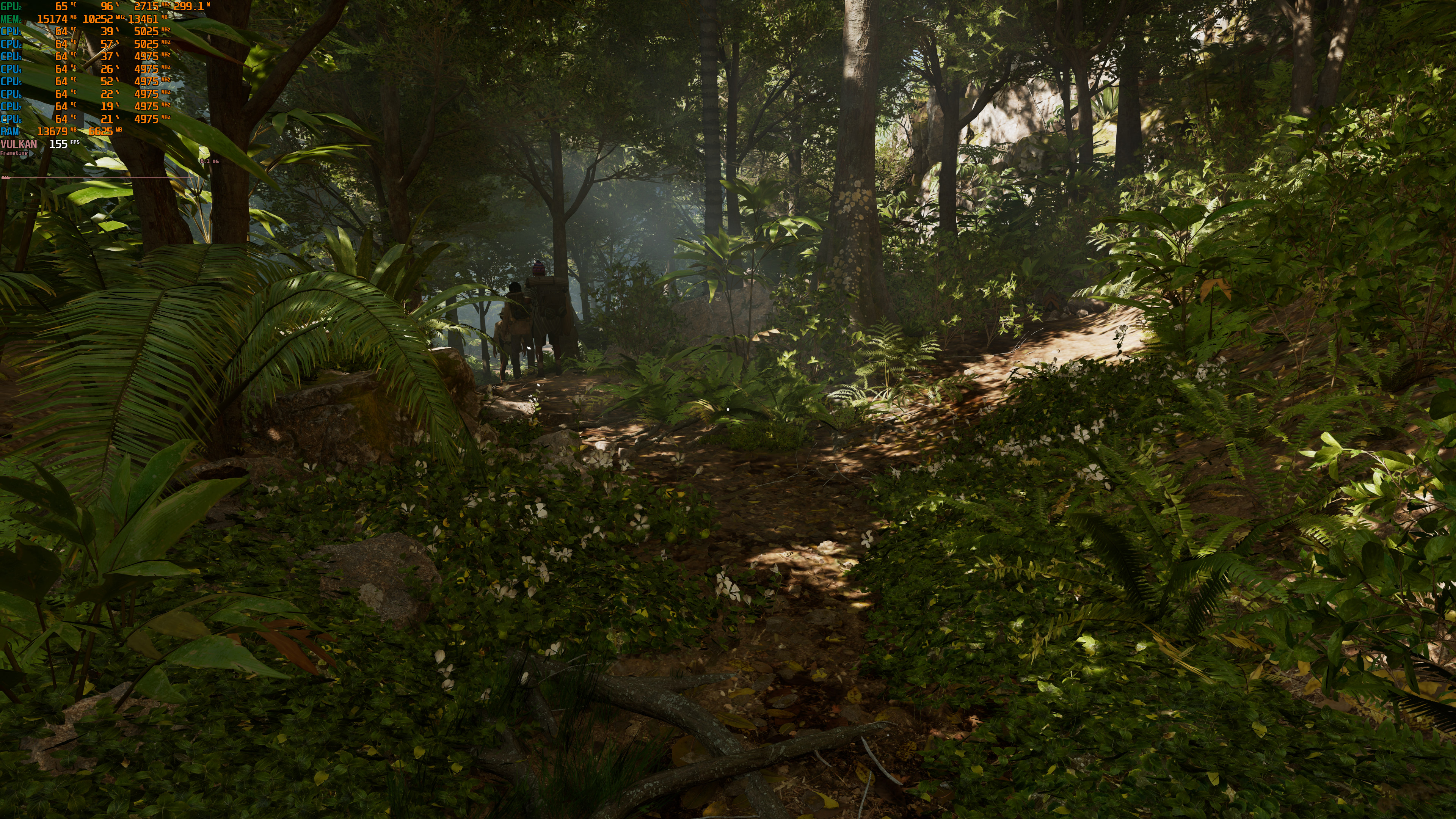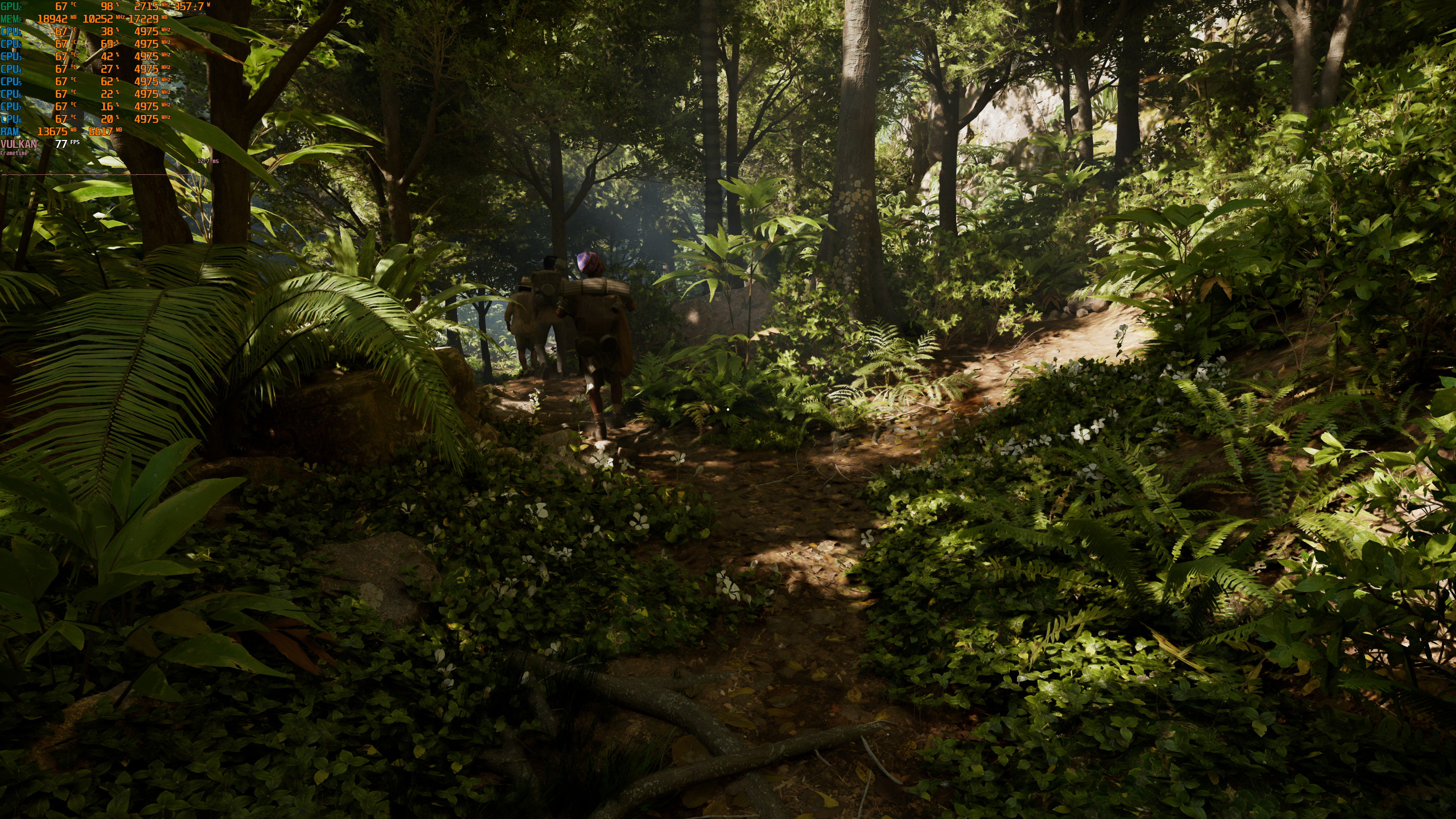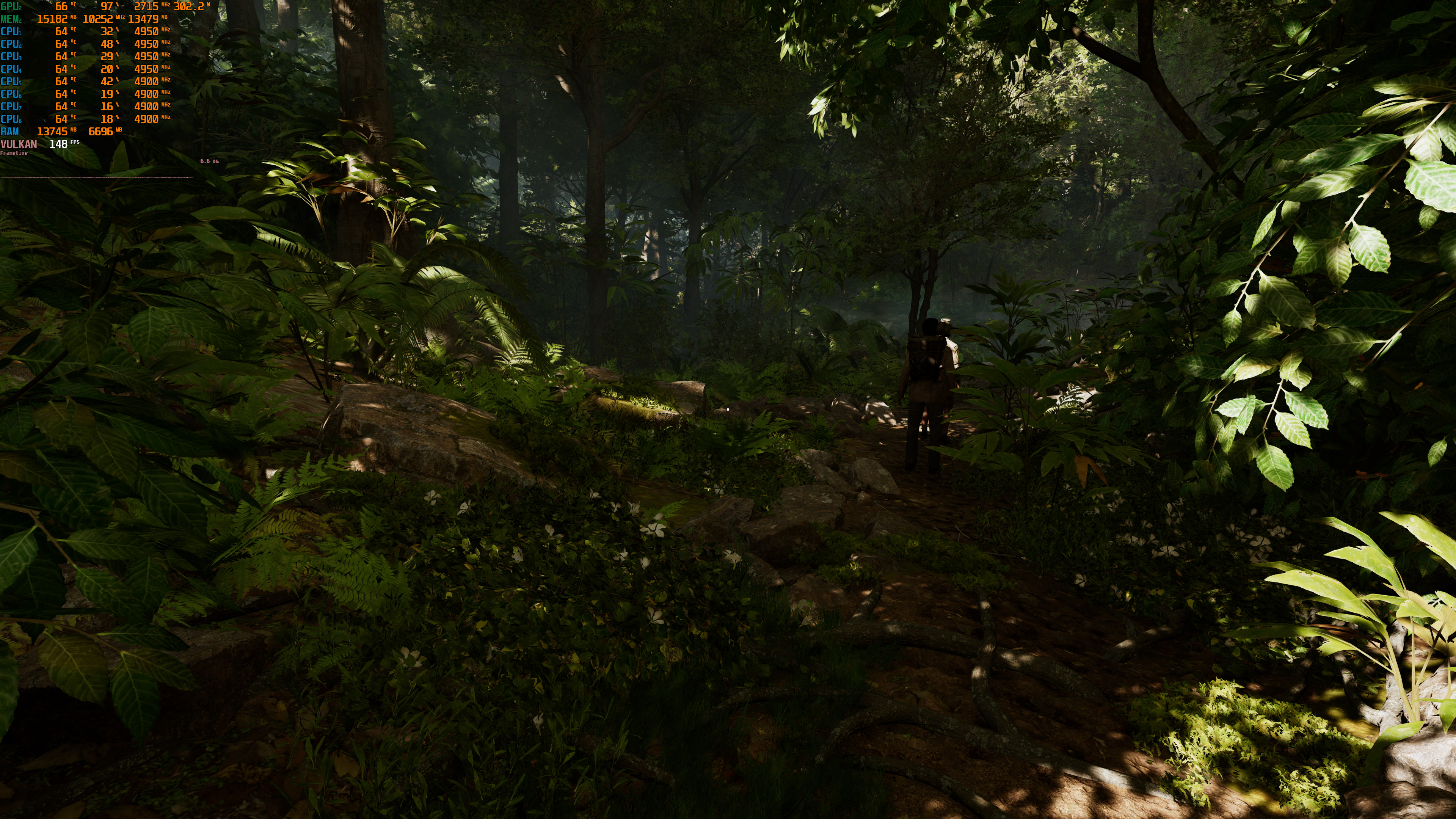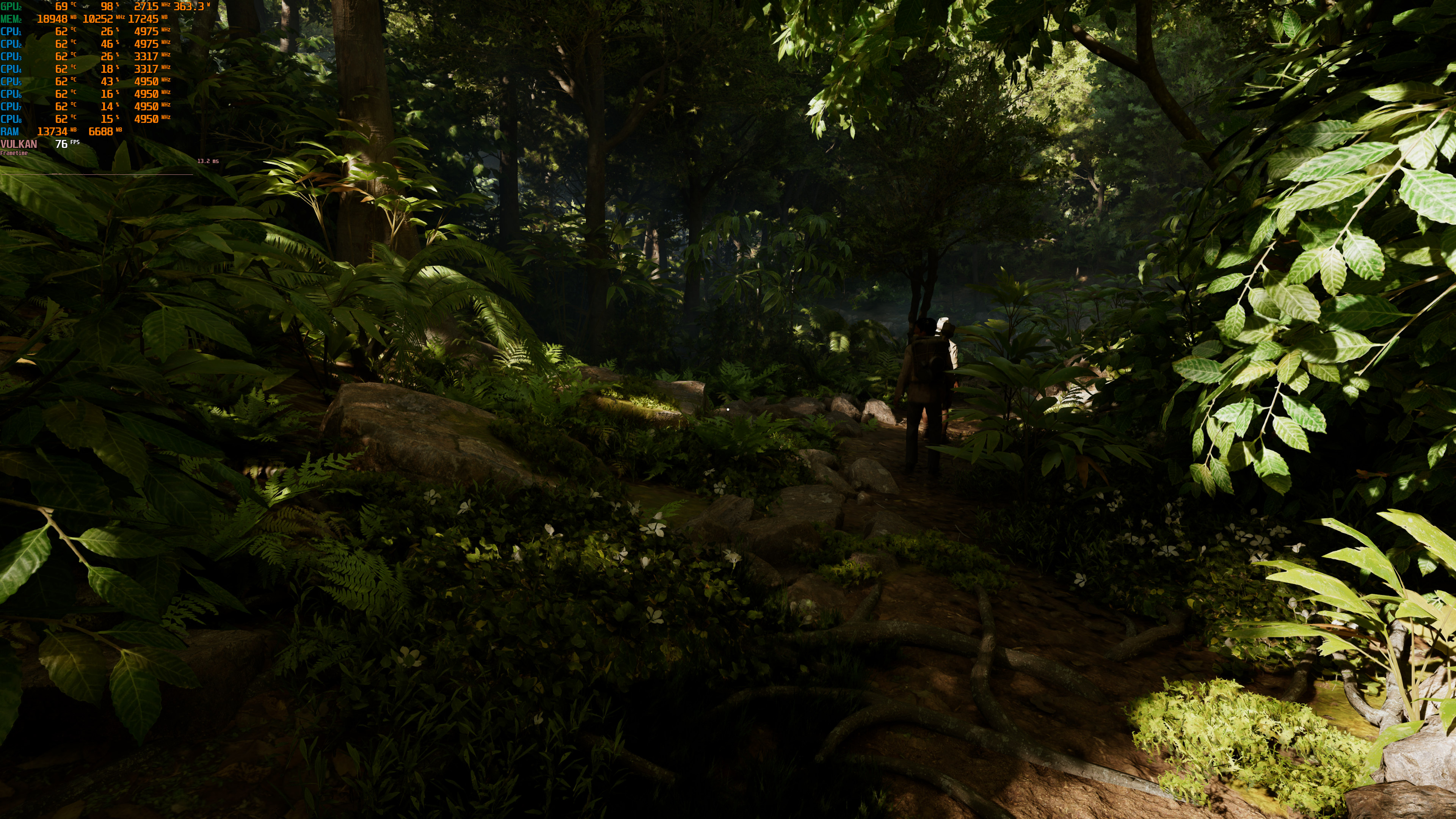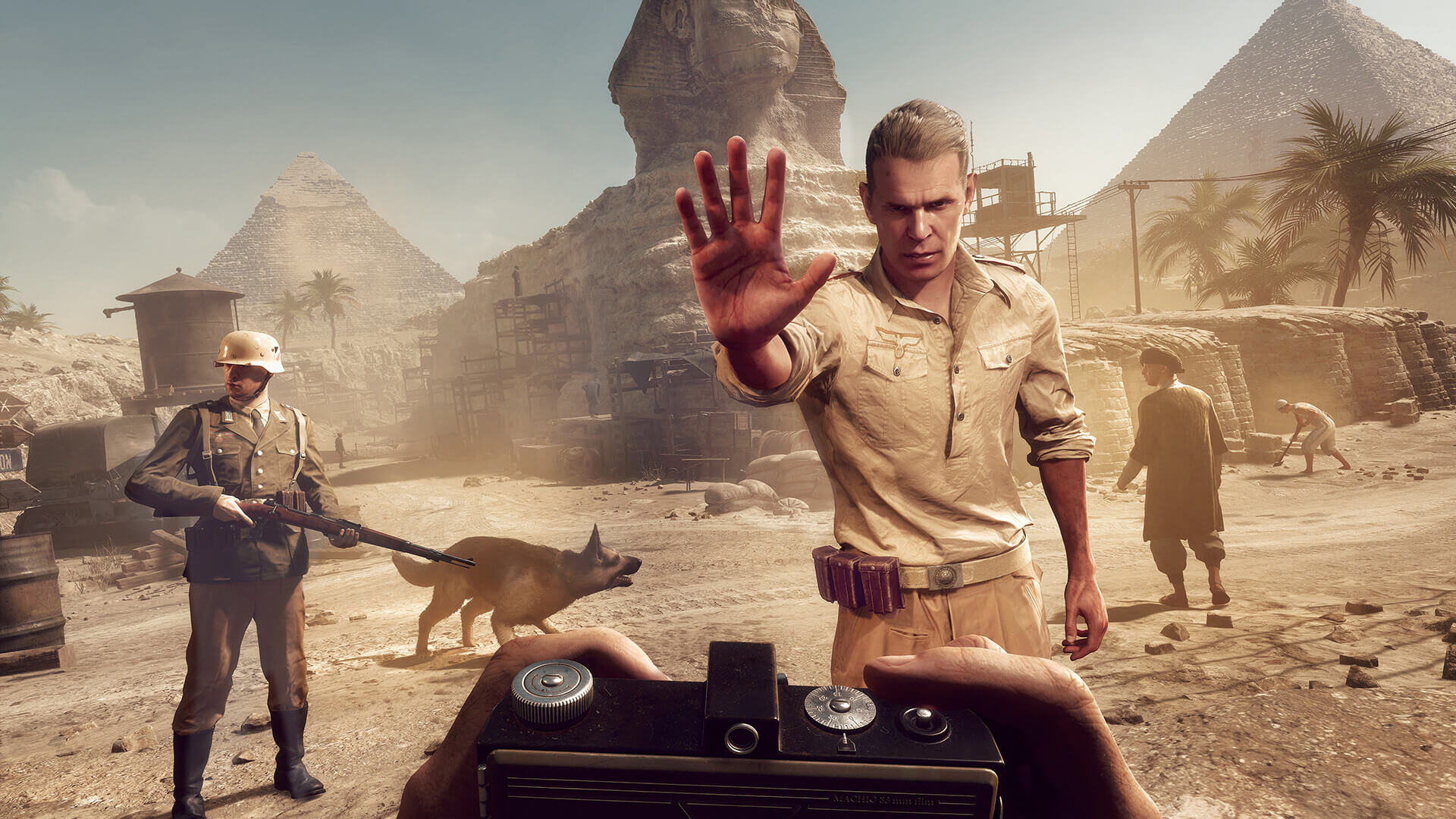Switching to Ultra textures reduces performance by about 7 to 10fps. With the default settings on High, there's a noticeable improvement in framerate but still low -30, 31fps-. I observed the GPU utilization hitting 100%, yet the overall performance remains underwhelming, especially considering how the game runs on an RTX 3050 4GB laptop variant (39fps average on low, while the A770 16GB average is 45fps, meh). Additionally, the GPU power draw is around 145W, well below the card's maximum of 190W.
@DavidGraham commented on a different post that the Intel A770 was performing below the expectations in this game. Odd taking into account it runs under Vulkan which is a strong point of Intel ARC and again, Doom Eternal performed very well even with RT on.

